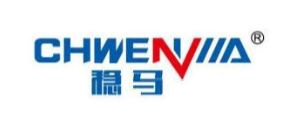
TNSJA-400KVA 380V Three phase oil immersed fully automatic intelligent voltage regulator
2024-04-10

Oil-immersed voltage stabilizers are devices that use electromagnetic induction principles to regulate voltage. They consist of a voltage-regulating transformer and supporting facilities (such as oil tanks, stators, rotors, motors, limiters, etc.) and are widely used in various fields such as industrial and mining enterprises, imported equipment, elevator lighting, precision machine tools, railways, and construction sites. Oil-immersed voltage stabilizers are characterized by their robust structure, high heat dissipation efficiency, continuous voltage stabilization design, contactless voltage adjustment, and digital control panel monitoring.
Technical parameters of oil-immersed voltage stabilizers include an oil-immersed induction control method, an input rated voltage of 380VAC, a voltage range from 323VAC to 437VAC, and a frequency of 50/60 Hz. The output rated voltage is also 380VAC, with a voltage stabilization accuracy of ±1% (adjustable to 1%~5%), a power factor of PF≥0.8, efficiency of ≥98%, response time of ≤0.5 seconds, delayed output of ≤5 seconds (optional item), and waveform distortion of ≤1%. In addition, oil-immersed voltage stabilizers also have protection functions for overvoltage, undervoltage, overload, and short circuit.
The insulation of oil-immersed transformers mainly relies on oil, which also serves as a cooling medium, dissipating heat through oil immersion self-cooling, air cooling, water cooling, or forced oil circulation. The structure of an oil-immersed transformer includes a core, windings, an oil tank, a voltage regulation device, a radiator, an oil pillow, a gas relay, an insulating bushing, and a pressure relief valve. Its insulation functions include isolating different live parts, improving the uniformity of the electric field distribution, providing capacitance, and offering mechanical support.
Compared with dry-type stabilizers, oil-immersed stabilizers have the advantages of being contactless, maintenance-free, impact-resistant, high-power, low-priced, stable, and adaptable to harsh environments. However, they also have disadvantages such as high loss, slow response, high noise, waveform distortion, and large size. Oil-immersed stabilizers are suitable for use in places with high dust, debris, high environmental temperatures, and requirements for sealing, such as in the metallurgy, stamping, furniture, and glass industries.
